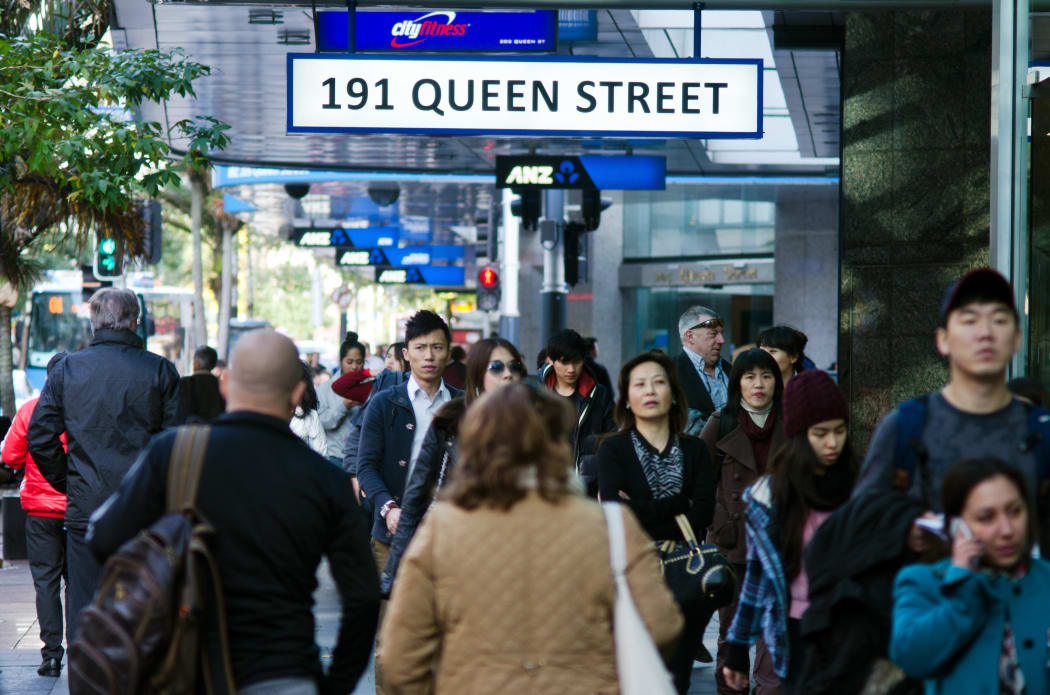New Zealand's institutions and systems are not fit for purpose in the face of the country's changing demographic profile, according to a leading academic on the subject.
Massey University's professor in humanities and social sciences, Paul Spoonley, tells Kathryn Ryan Aotearoa's fast-changing demographics are posing problems that need solving by forward planning.

Photo: 123RF
His new book The New New Zealand: Facing Demographic Disruption outlines these challenges.
With the borders shut and immigration at a virtual standstill, population growth will be significantly affected, he says.
“The evidence from overseas suggests a huge drop in births and pregnancies. So the Brookings Institute in the United States is anticipating 300,000 to 500,000 fewer births because of Covid-19 in that country. Those numbers are huge.
“Of course, the one that impacts most upon us is the closure of our borders and the fact immigration has come to a grinding halt.”
With record numbers of immigrants arriving into the country last year, this year is looking the opposite. For the 12 months ending in June this year, there was a net gain of 79,400.
“To put that into context, that’s almost the double per head net gain that Australia got, four-to-five times higher than the US or the UK, so it’s just extraordinary. And our population grow by 2.1 percent in that time and migration was responsible for 75 percent of that.”
New Zealanders are returning from overseas, with skills and business connection, which is important to the economy and may offer a counter-balance to loss of the influx of skilled immigrant workers.
If returning numbers are not enough to fill those skill gaps in the labour market, the Government will need to intervene. But there is the possibility that this rate of population grow was too high and the current lull may offer a window to analyse whether it was having a negative net effect and what the country needs in the future.
“We’ve had very high inward migration. It contributes significantly to our population growth and we might need to ask, is that population growth rate appropriate? Are there environmental or social or economic things that are imposing negative elements on our systems here. Housing in Auckland might be an example.
“But at the same time there are whole industries, sectors and employers who have become very reliant migrants - so what do they do?”
The aged care sector employs approximately 30,000 workers and 10,000 of those people are on a migrant visa.
Spoonley’s book asks a wider question of whether enough planning has been done for the prospect of New Zealand having one-in-four citizens over the age of 65. In the early 2030s the number of people at 65 and above is expected to reach 1.2 million.
“New Zealand is right at the top, almost the same as Japan in terms of the expected years remaining at aged 65,” he says.
Planning on future immigration is also key, reassessing what the needs of the country are in terms of skills and demographic considerations, he says.
“One of the things that frustrates me is migrants tend to end up in Auckland, about 60 percent of them. And really shouldn’t we be having a regional policy framework which helps say, in parts of the South Island, do you need people to keep your schools or GPs going? Do you need more people to work, in let's say the dairy industry which has been very reliant on Philippinos."
Provincial growth driven by retirement and people moving to attractive lifestyle destinations is restricted by limited access to specialist health care and hospitals in these regions, he says.
In terms of ethnicity, there is an expected growth in Maori and more so Pasifika communities because their fertility is high, but the biggest growth will be in Asian communities.
In 2013, 12 percent of the population was Asian. That figure is expected to hit 20 percent “quite soon”, Spoonley says, with about 38 percent of Auckland’s population expected to be designated Asian.
Other minority communities from a plethora of different nations will also become very significant.
The marriage rate is modest compared to other countries, with younger people not committing to partnerships as much, so that households designated ‘single’ will continue to rise.
Households with several family generations residing under the same roof is also increasing.
Spoonley says what is concerning is that country’s housing market and social systems are not calibrated to deal with these increasing trends and these are "not fit for purpose". Privatising the solutions isn't working, particularly in the case of aged care facilities.
“I would love to see us look at some of the European, and particularly Scandinavian models about co-housing. We’ve got very limited examples in this country of that.
“I think that we tend to put older people in a retirement village out on the edges of a major city and away from other communities. We really need to ask some fundamental questions about our institutions and whether they’re up to the task of a very, very different population structure that we’re seeing.”

